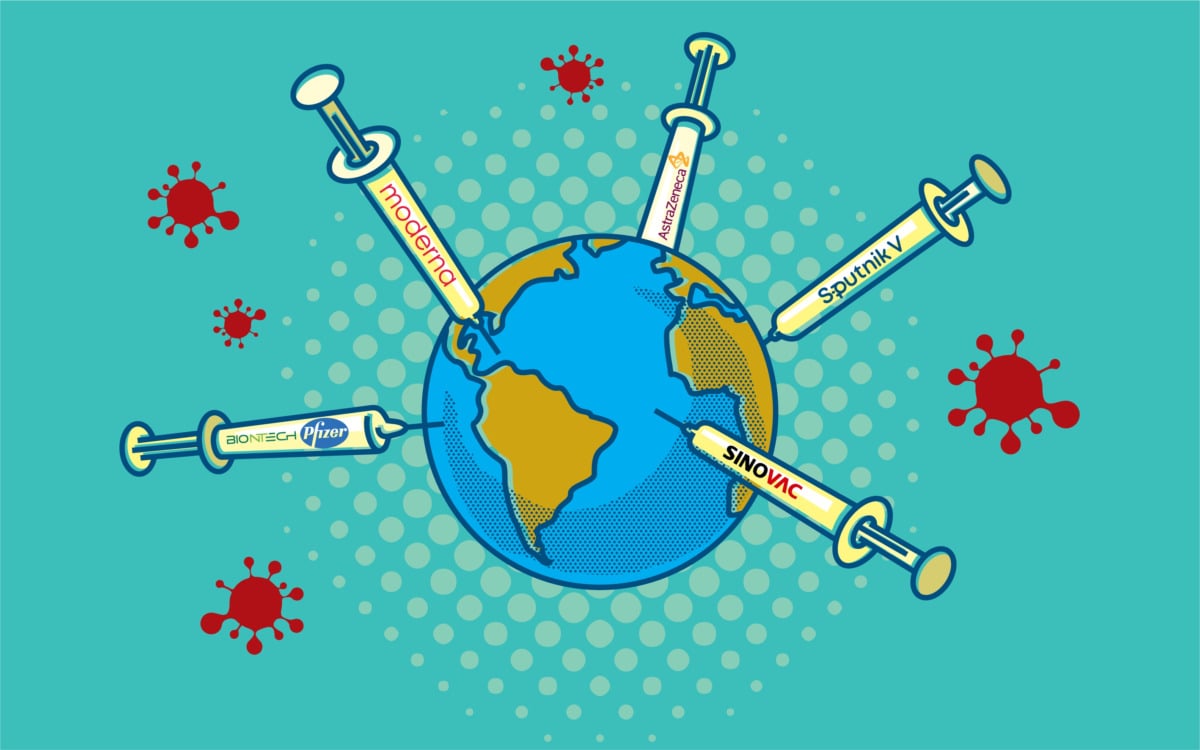According to a new World Health Organization (WHO) report released on October 29, 2024, tuberculosis (TB) replaced COVID-19 to become the top cause of infectious disease-related deaths in 2023, as a total of 1.25 million people died from it last year. Additionally, 8.2 million people were newly diagnosed, up from 7.5 million in 2022.
TB is caused by the bacterium Mycobacterium tuberculosis and most often affects the lungs. It is spread through the air when people with TB cough, sneeze, or spit; a person only needs to inhale a few germs to become infected.
Mostly affecting people in low- and middle-income countries, current treatment options for tuberculosis are limited, and progress in research to come up with alternative options has been relatively slow.
According to Mustapha Gidado, executive director of KNCV TB Plus, TB is a disease that significantly occurs in the global south, where there is currently a TB pandemic going on. “There are quite a lot of drivers of the epidemic that are prevalent in most of these countries, related to population size, poverty issues, weak health systems, and also undernutrition in some of those countries,” said Gidado.
He added that the human immunodeficiency virus (HIV) pandemic, alcohol abuse, and issues related to conflict and internally displaced people also act as drivers for the spread of TB.
One of the biggest problems with treating TB today is drug-resistant TB, which is a major contributor to antimicrobial resistance worldwide, with around half a million people falling ill with drug-resistant TB annually. Multidrug-resistant TB means the TB bacteria are resistant to the two most commonly used drugs in the current first-line regimen, while extensively drug-resistant TB is a strain of TB resistant to four commonly used anti-TB drugs. This is a major obstacle to the successful treatment of TB, and people with drug-resistant TB face economic and social costs, with only one in three being able to access quality care.
Moreover, the only TB vaccine currently licensed, the Bacille Calmette-Guérin (BCG) vaccine, is more than 100 years old and performs poorly in preventing infection in older children and adults. A recent study revealed that immune protection from the vaccine wanes after five years, and while the vaccine was found to be 37% effective in children under five after being administered in infancy, there was no conclusive evidence it continued to provide protection in children over the age of 10.
Given the ongoing pandemic and issues surrounding antimicrobial resistance and a lack of an effective vaccine, it’s clear that new treatment options are needed to tackle TB. In this article, we explore some of the most recent advancements in tuberculosis research that could soon lead to a more promising treatment option.
Gates MRI-led vaccine in phase 3 trials for tuberculosis
The Gates Medical Research Institute (MRI), a nonprofit organization and subsidiary of the Bill & Melinda Gates Foundation, is sponsoring the development of arguably the most watched TB vaccine candidate currently around.
The candidate, called M72/AS01E, aims to become the first vaccine to help prevent pulmonary TB, the most common form of the disease, in adolescents and adults. It has been in development since the early 2000s and was originally designed and clinically evaluated by biopharma giant GSK up to the phase 2b stage, in partnership with Aeras and the International AIDS Vaccine Initiative (IAVI). It was funded by GSK and in part by the Gates Foundation.
Then, in 2020, GSK announced a partnership with Gates MRI to further develop M72/AS01E. Now being tested in phase 3 trials, GSK provides technical assistance to Gates MRI, supplies the adjuvant component of the vaccine for the trial, and will provide the adjuvant post-licensure if the trial is successful.
The phase 3 trial launched in South Africa in March 2024. In total, the trial will involve up to 20,000 participants, including people living with HIV, at up to 60 trial sites in South Africa and six other countries – Zambia, Malawi, Mozambique, Kenya, Indonesia, and Vietnam.
If given the green light, the candidate could become the first new TB vaccine since the BCG was approved.
Biofabri‘s TB vaccine MTBVAC in phase 3 clinical trials in India
Also in March 2024, it was announced that Indian vaccine maker Bharat Biotech began phase 3 trials of the first live attenuated vaccine of Mycobacterium TB isolated from a human strain, which was developed by Spanish biopharma company Biofabri in the laboratory of the University of Zaragoza with Dr. Brigitte Gicquel of the Pasteur Institute, Paris.
The vaccine, known as MTBVAC, is the only vaccine against TB in clinical trials based on a genetically modified form of Mycobacterium tuberculosis. Unlike the BCG vaccine, it contains all of the antigens present in strains that infect humans. MTBVAC is ultimately being developed to be a more effective and potentially longer-lasting vaccine than BCG for newborns and for the prevention of TB in adults and adolescents.
Biofabri has already completed phase 1 and 2 trials in other countries. A phase 2a trial in newborns showed that the vaccine is as safe as BCG and more immunogenic than BCG. Meanwhile, a phase 1b/2a trial in adults also showed these same results.
As well as the phase 3 trials to evaluate the safety and immunogenicity of MTBVAC in India, a pivotal safety, immunogenicity, and efficacy trial is planned for 2025.
Collaboration to advance two investigational TB combination treatment regimens
When it launched in 2020, the PAN-TB collaboration – made up of philanthropic, non-profit, and private sector organizations – was described as a “first-of-its-kind” effort to address the need for a new novel treatment for TB by accelerating the development of a drug regimen that can treat all forms of the disease, including drug-resistant TB.
In August 2022, PAN-TB announced its most recent step towards creating a new universal treatment regimen: the joint development agreement (JDA). The agreement was intended to support the progression of two investigational TB combination treatment regimens into phase 2 of clinical development. The regimens combine registered products with new chemical entities (NCEs), and the collaboration will evaluate whether these regimens can effectively treat all forms of active pulmonary TB using substantially shorter treatment durations than current drug regimens. The aim is to identify a regimen suitable for pivotal late-stage phase 3 studies.
“Existing treatment regimens are difficult for patients and complex for health systems because they are long in duration and rely on providers to accurately diagnose the type of TB infection. The goal of the collaboration is to identify new TB regimens that are safe, better tolerated, shorter in duration, simpler to use than existing options, and have the potential to improve outcomes for all TB patients, regardless of the form of their disease,” said Renata Hoffstetter, senior project manager at the Foundation for the National Institutes of Health (FNIH).
In November 2023, it was announced that the TB Alliance – a not-for-profit organization that is part of the PAN-TB collaboration – had launched a new pan-phase 2 clinical trial to evaluate the safety and efficacy of a combination of a new experimental compound, TBAJ-876 – which belongs to a category of antibiotic that targets a key enzyme of the tuberculosis bacteria involved in energy production – with pretomanid and linezolid, components of TB Alliance’s BPaL regimen that combines the antibiotics bedaquiline, pretomanid, and linezolid.
Being tested across five countries, the hope is that this new treatment can be a “universal regimen” to treat TB.
License agreement to develop and commercialize investigational drug Telacebec for TB
It was announced in February 2023 that South Korean biotechnology company Qurient entered a license agreement with TB Alliance to develop and commercialize the first-in-class investigational orally active drug telacebec (Q203), to be used in the treatment of TB.
Telacebec was successfully tested for the treatment of TB in a phase 2a early bactericidal activity (EBA) study, and works by blocking Mycobacterium tuberculosis growth by selectively inhibiting cytochrome bc1 complex, which is a crucial component of the electron transport chain. Inhibiting the complex disrupts the bacterium’s ability to generate energy.
Having been shown in preclinical and clinical trials to offer potent efficacy against drug-sensitive and drug-resistant TB – along with other types of TB – it is thought that telacebec can become an essential component of drug combination regimens to treat the disease. It has already shown positive synergy with bedaquiline – a U.S. Food and Drug Administration (FDA)-approved drug that targets the adenosine triphosphate (ATP) synthase enzyme of TB mycobacteria – in murine chronic infection models. This suggests the potential for a new drug regimen using both telacebec and bedaquiline.
Also, the FDA has granted telacebec Orphan Drug Designation and Fast Track Designation.
Kiyean Nam, chief executive officer (CEO) of Qurient commented that the partnership between Qurient and TB Alliance will help to accelerate the widespread availability of telacebec, bringing it to those who need it.
Plans to establish a TB Vaccine Accelerator Council
A recent document commissioned by the World Health Organization (WHO) estimated that a vaccine that is 50% effective in preventing tuberculosis infection in adolescents and adults could prevent up to 76 million new cases, 8.5 million deaths, and 42 million courses of antibiotic treatment, over a 25-year period. Meanwhile, a vaccine that has 75% efficacy could avert up to 110 million new cases and 12.3 million deaths.
However, according to Nebiat Gebreselassie, technical officer at WHO, there are currently at least 16 candidates under clinical development, but only one of those meets the minimum criteria set in WHO’s Preferred Product Characteristics for New Tuberculosis Vaccine.
With this in mind, in another positive move for tuberculosis research, WHO announced plans in January 2023 to establish a TB Vaccine Accelerator Council to boost the vaccine pipeline and facilitate the licensing and use of effective novel TB vaccines with the aim of putting an end to the TB pandemic.
“The Council is anticipated to accelerate TB vaccine development by creating strategies for innovative financing, partnership models, and other incentives that are necessary to expedite the development of new TB vaccines, as well as their manufacturing and equitable global access, in due course. The Council is also anticipated to be a platform for high-level political advocacy with decision-makers in the public, private, philanthropy, and other relevant sectors,” said Gebreselassie.
Contract awarded for research project to develop the next generation of tuberculosis vaccines
In another promising announcement surrounding the possible creation of new TB vaccines, the National Institute of Allergy and Infectious Diseases – part of the U.S. National Institutes of Health (NIH) – awarded an AU$19 million contract to the University of Sydney and the Centenary Institute, together with collaborators, to develop the next generation of TB vaccines.
The contract, Advancing Vaccine Adjuvant Research for Tuberculosis, supports the development of vaccines through a multinational collaboration, funding five years of tuberculosis vaccine research and development so they reach the point where they can be tested in human clinical trials.
The research will involve the unique head-to-head comparison of antigens – proteins from the tuberculosis bacterium – and adjuvants – molecules added to vaccines to create a stronger immune response – which are two critical components needed to create a successful vaccine for TB. Three specific antigens will be tested with up to eight separate adjuvants.
“Adjuvants are critical for stimulating immune responses and identifying which one will be important for future vaccines. We are using modern tools to compare, in a head-to-head manner, adjuvants that will be used for the development of protein-based tuberculosis vaccines. New efficacious vaccines will have a significant impact on the global burden of tuberculosis, saving the lives of many people,” said Angelo Izzo, a principal investigator on the project at the Centenary Institute.
Research group from the University of Surrey develops new method to help target more effective treatments for tuberculosis
Heterogeneity is always present to some degree in cell populations and is a fundamental property of all biological systems. This means the collective behaviors of a population of cells do not represent the behaviors of individual cells, which is why, when searching for treatments, studying single cells, rather than a bulk population of cells, can be extremely beneficial.
Last year, researchers from the University of Surrey in the U.K. used a new method to measure the amount of drugs and lipids in individual cells, which could allow health professionals to target more effective treatments for diseases such as TB.
Researchers used a technique called nanocapillary sampling, where scientists used a microscopic tool to enable the selection and isolation of individual cells, which was coupled to liquid chromatography. This allows molecular species to be separated before ionization, improving the measurement precision of drug analytes.
“The individual cells were analyzed using a technique called liquid chromatography mass spectrometry to determine the concentration of the drugs in each cell. We discovered that some drugs were absorbed into the cells more effectively than others and there was a big variation in how much drug was found in each cell,” said Holly-May Lewis, first author of the study from the University of Surrey.
This discovery indicates that different cells absorb drugs differently, with each cell containing a unique lipid “fingerprint”. Lewis said that this could be a significant step in improving the understanding of life-saving treatments for TB, along with other infectious diseases and cancer.
TB research: More funding needed, according to WHO
The data from the recent WHO report points out that eradicating TB is still a distant goal, as the fight against the disease faces persistent challenges such as significant underfunding, particularly in low- and middle-income countries, which bear 98% of the burden of the disease.
WHO stated that global milestones and targets for reducing the disease burden are off-track, and considerable progress is needed to reach other targets set for 2027.
“The fact that TB still kills and sickens so many people is an outrage, when we have the tools to prevent it, detect it, and treat it,” WHO director-general Tedros Adhanom Ghebreyesus told reporters at the time the report was released.
Having said that, the TB research listed in this article suggests that at least some progress is being made in the field.
In particular, Gates MRI’s commendable work to develop the first TB vaccine in more than a century means that a more effective treatment option for the most common form of the disease could very soon be on its way to the people who need it the most, marking a significant milestone in TB research.


New technologies related to tuberculosis research















No Comments
Leave a comment Cancel